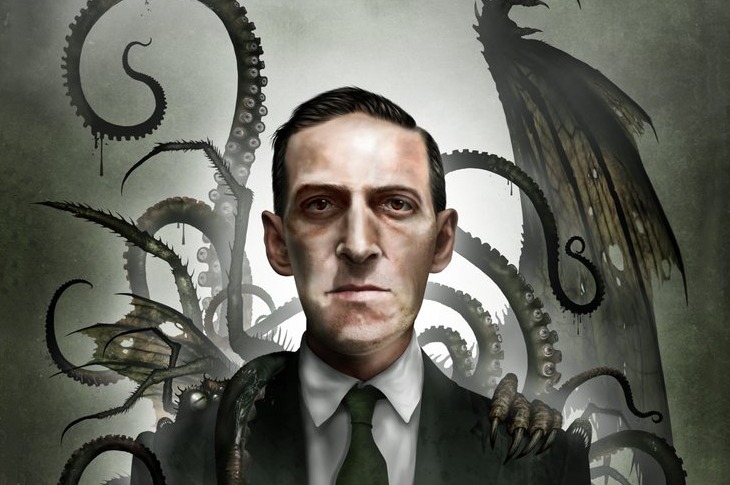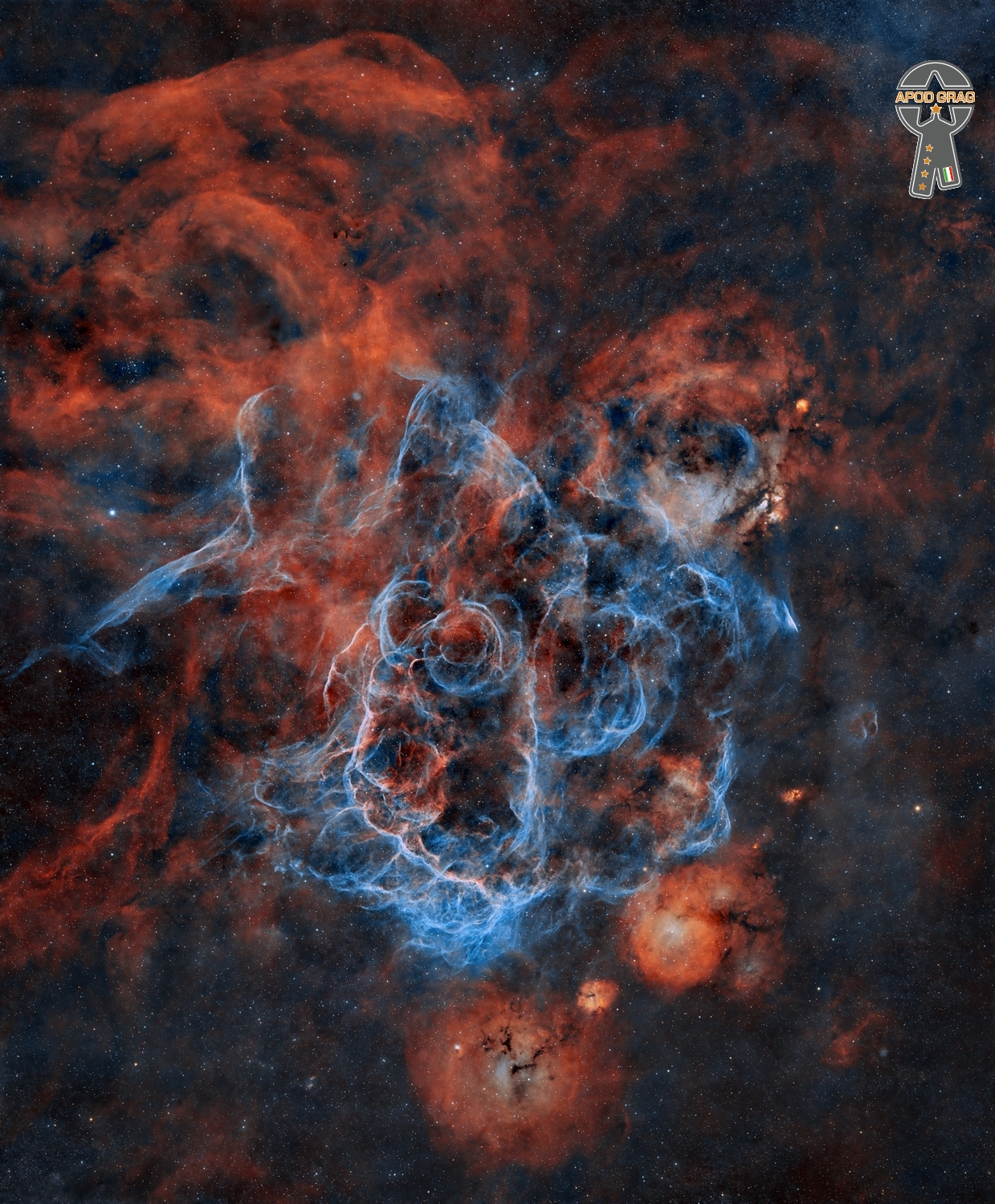Blog
Stephen Paul Motian (March 25, 1931 – November 22, 2011 Philedelphia) was an American jazz drummer, percussionist, and composer of Armenian descent. He played an important role in freeing jazz drummers from strict time-keeping duties.
Motian first came to prominence in the late 1950s in the piano trio of Bill Evans and later was a regular in pianist Keith Jarrett‘s band for about a decade (c. 1967–1976). The drummer began his career as a bandleader in the early 1970s. Perhaps his two most notable groups were a longstanding trio with guitarist Bill Frisell and saxophonist Joe Lovano as well as the Electric Bebop Band, in which he worked mostly with younger musicians on interpretations of bebop standards.
more...Cecil Percival Taylor (March 25, 1929 – April 5, 2018 NY) was an American pianist and poet.
Taylor was classically trained and was one of the pioneers of free jazz. His music is characterized by an energetic, physical approach, resulting in complex improvisationoften involving tone clusters and intricate polyrhythms. His technique has been compared to percussion. Referring to the number of keys on a standard piano, Val Wilmer used the phrase “eighty-eight tuned drums” to describe Taylor’s style. He has been referred to as “Art Tatum with contemporary-classical leanings”.
more...
The subject of today’s NASA/ESA Hubble Space Telescope Picture of the Week is the stunning spiral galaxy NGC 5530. NGC 5530 is situated 40 million light-years away in the constellation Lupus (The Wolf). This galaxy is classified as a ‘flocculent’ spiral, meaning that its spiral arms are patchy and indistinct.
While some galaxies have extraordinarily bright centres where they host a feasting supermassive black hole, the bright source near the centre of NGC 5530 is not an active black hole but instead a star within our own galaxy, only 10 thousand light-years from Earth. This chance alignment gives the appearance that the star is at the dense heart of NGC 5530.
If you had pointed a backyard telescope at NGC 5530 on the evening of 13 September 2007, you would have seen another bright point of light adorning the galaxy. That night, Australian amateur astronomer Robert Evans discovered a supernova, named SN 2007IT, by comparing NGC 5530’s appearance through the telescope to a reference photo of the galaxy. While it’s remarkable to discover even one supernova using this painstaking method, Evans has in fact discovered more than 40 supernovae this way! This particular discovery was truly serendipitous: it’s likely that the light from the supernova had completed its 40-million-year journey to Earth just days before the explosion was discovered.
[Image Description: A spiral galaxy, seen tilted at a slight angle, on a dark background of space. It glows softly from its centre, throughout its disc out to the edge. The disc is a broad swirl of webs of dark reddish dust and sparkling blue patches where stars have formed. Atop the centre of the galaxy there is a star that appears very large and bright with four spikes emanating from it, because it is relatively close to Earth.]

Lee Oskar (born 24 March 1948) is a Danish harmonica player, notable for his contributions to the sound of the rock-funk fusion group War, which was formed by Howard E. Scott and Harold Brown, his solo work, and as a harmonica manufacturer. He continues to play with 3 other original War band members, Harold Brown, Howard Scott and B.B. Dickerson, under the name LowRider Band.
more...Paul Brownlee McCandless Jr. (born March 24, 1947 Indiana, PA) is an American multi-instrumentalist and founding member of the American jazz group Oregon. He is one of the few jazz oboists. He also plays bass clarinet, English horn, flute, penny whistle, tenor saxophone, sopranino saxophone, and soprano saxophone.
more...Boogie Bill Webb (March 24, 1924 – August 22, 1990 NOLA) was an American Louisiana blues and rhythm-and-blues guitarist, singer and songwriter. His music combined Mississippi country blues with New Orleans R&B.[1] His best-known recordings are “Bad Dog” and “Drinkin’ and Stinkin'”. Despite a lengthy (albeit intermittent) career, Webb released only one album.
more...Carol Kaye (
born March 24, 1935) is an American musician. She is one of the most prolific recorded bass guitarists in rock and pop music, playing on an estimated 10,000 recordings in a career spanning over 65 years.
Kaye began playing guitar in her early teens and after some time as a guitar teacher, began to perform regularly on the Los Angeles jazz and big band circuit. She started session work in 1957, and through a connection at Gold Star Studios began working for producers Phil Spector and Brian Wilson. After a bassist failed to turn up to a session in 1963, she switched to that instrument, quickly making a name for herself as one of the most in-demand session players of the 1960s, playing on numerous hits. She moved into playing on film soundtracks in the late 1960s, particularly for Quincy Jones and Lalo Schifrin, and began to release a series of tutoring books such as How To Play The Electric Bass. Kaye became less active towards the end of the 1970s, but has continued her career and attracted praise from other musicians.
During the peak of her years of session work, Kaye became part of a stable of Los Angeles–based musicians known as The Wrecking Crew. She appeared in the 2008 documentary The Wrecking Crew. Kaye was the sole regular female member of the Wrecking Crew (though she has said the collective were never known by this name, which was later invented by Hal Blaine), a collective of studio musicians who played on a large number of hit records from Los Angeles in the 1960s. Throughout the decade, while at the time unknown to the public, Kaye played bass on a substantial number of records that appeared on the Billboard Hot 100. According to the New York Times, she played on 10,000 recording sessions. She appeared on sessions by Frank Sinatra, Simon & Garfunkel, Stevie Wonder, Barbra Streisand, The Supremes, The Temptations, the Four Tops and The Monkees. She played electric bass on Nancy Sinatra‘s “These Boots Are Made for Walkin’“, while Chuck Berghofer played double bass. She also came up with the introduction on fellow session player Glen Campbell’s hit “Wichita Lineman“. Kaye later said that during the 1960s, she would sometimes play three or four sessions per day, and was pleased that so many of them created hit records.
more...
Georg Philipp Telemann (24 March [O.S.14 March] 1681 – 25 June 1767) was a German Baroque composer and multi-instrumentalist. He is one of the most prolific composers in history, at least in terms of surviving oeuvre. Telemann was considered by his contemporaries to be one of the leading German composers of the time, and he was compared favourably both to his friend Johann Sebastian Bach, who made Telemann the godfather and namesake of his son Carl Philipp Emanuel, and to George Frideric Handel, whom Telemann also knew personally.
Almost completely self-taught in music, he became a composer against his family’s wishes. After studying in Magdeburg, Zellerfeld, and Hildesheim, Telemann entered the University of Leipzig to study law, but eventually settled on a career in music. He held important positions in Leipzig, Sorau, Eisenach, and Frankfurt before settling in Hamburg in 1721, where he became musical director of that city’s five main churches. While Telemann’s career prospered, his personal life was always troubled: his first wife died less than two years after their marriage, and his second wife had extramarital affairs and accumulated a large gambling debt before leaving him. As part of his duties, he wrote a considerable amount of music for educating organists under his direction. This includes 48 chorale preludes and 20 small fugues (modal fugues) to accompany his chorale harmonisations for 500 hymns. His music incorporates French, Italian, and German national styles, and he was at times even influenced by Polish popular music. He remained at the forefront of all new musical tendencies, and his music stands as an important link between the late Baroque and early Classical styles. The Telemann Museum in Hamburg is dedicated to him.
more...Steve Kuhn (born March 24, 1938 NY) is an American jazz pianist, composer, arranger, bandleader, and educator.
After graduating from Harvard, he attended the Lenox School of Music where he was associated with Ornette Coleman, Don Cherry, and Gary McFarland. The school’s faculty included Bill Evans, George Russell, Gunther Schuller, and the members of the Modern Jazz Quartet. This allowed Kuhn to play, study, and create with some of the most forward-thinking innovators of jazz improvisation and composition; it culminated with his joining trumpeter Kenny Dorham‘s group for an extended time and (briefly) John Coltrane‘s quartet at New York’s Jazz Gallery club.
Kuhn also has appeared with Stan Getz, Art Farmer, Oliver Nelson, Gary McFarland, Ron Carter, Scott LaFaro, Harvie Swartz, vocalist Sheila Jordan, Billy Drummond, David Finck, and Miroslav Vitous. From 1967 to 1971 Kuhn lived in Stockholm, Sweden where he worked with his own trio throughout Europe. In 1971 Kuhn moved back to New York City and formed a quartet but continued doing European gigs and appearing at the Newport Jazz Festival.
more...The Vela supernova remnant is a supernova remnant in the southern constellation Vela. Its source Type II supernova exploded approximately 11,000 years ago (and was about 900 light-years away). The association of the Vela supernova remnant with the Vela pulsar, made by astronomers at the University of Sydney in 1968, was direct observational evidence that supernovae form neutron stars.
The Vela supernova remnant includes NGC 2736. Viewed from Earth, the Vela supernova remnant overlaps the Puppis A supernova remnant, which is four times more distant. Both the Puppis and Vela remnants are among the largest and brightest features in the X-ray sky.
The Vela supernova remnant is one of the closest known to us. The Geminga pulsar is closer (and also resulted from a supernova), and in 1998 another near-Earth supernovaremnant was discovered, RX J0852.0-4622, which from our point of view appears to be contained in the southeastern part of the Vela remnant. This remnant was not seen earlier because when viewed in most wavelengths, it is lost in the Vela remnant.

Yvette Marie Stevens (born March 23, 1953), better known by her stage nameChaka Khan , is an American singer. Known as the “Queen of Funk“, her career has spanned more than five decades beginning in the early 1970s as the lead vocalist of the funk band Rufus. With the band she recorded the notable hits “Tell Me Something Good,” “Sweet Thing,” “Do You Love What You Feel,” and the platinum-certified “Ain’t Nobody.” Her debut solo album featured the number-one R&B hit “I’m Every Woman” (which became a pop hit for Whitney Houston). Khan scored another R&B charts hit with “What Cha’ Gonna Do for Me” before becoming the first R&B artist to have a crossover hit featuring a rapper, with her 1984 cover of Prince‘s “I Feel for You.” More of Khan’s hits include “Through the Fire” and a 1986 collaboration with Steve Winwood that produced a number-one hit on the Billboard Hot 100, “Higher Love.”
more...David Jay Grisman (born March 23, 1945 Hackensack, NJ) is an American mandolinist. His music combines bluegrass, folk, and jazz in a genre he calls “Dawg music”. He founded the record label Acoustic Disc, which issues his recordings and those of other acoustic musicians. He was inducted into the International Bluegrass Music Hall of Fame in 2023.
more...Woodville bluesman Robert Cage was born in New Orleans on March 23, 1937, but his family, which has roots in southwestern Mississippi, soon moved to Natchez, where he spent his first six years. They then moved to the Percy Creek community, about ten miles west of Woodville near Lake Mary, where he lived for several decades. He recalls that the first time he heard blues was via records on the “autophone” at his mother Carrie’s juke joint, which was located next to their home. [“Autophone” was the brand name of an early coin-operated machine, though it was used generically to refer to jukeboxes]. He recalls that there were other jukes in the area, including Nancy Green’s near Port Adams.
Cage particularly enjoyed the recordings of John Lee Hooker and was also influenced by local performers who played at the juke, including guitarist Lee Baker and fiddler Nolan Cage, a relative. His most important influence, though, was the guitarist/vocalist Scott Dunbar [1904-1994], who worked as a fishing guide on Lake Mary and often performed solo at the juke. In the mid-‘50s folklorist Frederic Ramsey recorded Dunbar as well as several of his family members, and Folkways Records later issued the recordings; a photograph of Dunbar appears on the first edition of Ramsey’s 1960 book Been Here and Gone. Folklorist Bill Ferris later recorded Dunbar, and a 1970 LP of Dunbar’s music on the Ahura Mazda label, From Lake Mary, was later reissued on CD on Fat Possum.
Cage’s mother gave him a guitar when he was eleven, and he first encountered Dunbar when he was around thirteen by surreptitiously listening to him at the juke. He “studied the devil out of” Dunbar’s songs, and today still performs many of these in a style similar to that of Dunbar, including “Easy Rider,” “Who Been Fooling You,” and “Little Liza Jane.” By eighteen Cage formed his own band with his cousins Ray Trass and Little Miller, with a drummer beating on a beer box. Because of local alcohol prohibitions, they performed mostly in clubs in nearby Louisiana including the State Line Club, where they were the house band, and the Black Cat.
He later led a band called the Blues Boys that featured saxophone and trumpet players and recalls that they played a wide variety of music and that he often played just like Chuck Berry. From the late ‘80s until 2001 he often played at the Hilltop Club just south of the border in Louisiana in a band that featured his son, Vincent “Buck” Cage, on bass, and C.L. Ward on drums.
In 1997 Fat Possum Records’ Bruce Watson and Matthew Johnson traveled to Woodville to try to locate Scott Dunbar, who had died several years earlier, and were referred to Cage. They recorded him and in 1998 issued the CD Can See What You’re Doing. Cage subsequently traveled to Japan and France to perform and traveled on multiple national tours as part of the Fat Possum Juke Joint Caravan. In 2008 he appeared at the Deep Blues Festival in Minnesota together with Natchez drummer/harmonica player Hezekiah Early and occasionally performed at events in the Miss-Lou area. For many decades Cage’s primary occupation was as a mechanic for large trucks, which he repaired at his home just west of downtown Woodville.
Cage passed away on July 23, 2012.
more...Iverson Minter (March 23, 1932 – February 25, 2012), known professionally as Louisiana Red, was an American blues guitarist, harmonica player, and singer, who recorded more than 50 albums. A master of slide guitar, he played both traditional acoustic and urban electric styles, with lyrics both honest and often remarkably personal. His career includes collaborations with artists as Muddy Waters, John Lee Hooker, Eric Burdon, and others.
more...Granville Henry “Stick” McGhee (March 23, 1918 – August 15, 1961) was an American jump blues guitarist, singer and songwriter, best known for his blues song “Drinkin’ Wine, Spo-Dee-O-Dee“, which he wrote with J. Mayo Williams.
In the military, McGhee often played his guitar. One of the songs he performed was “Drinkin’ Wine, Spo-Dee-O-Dee”, one of the earliest prototypical rock-and-roll songs. Cover versions were recorded by Wynonie Harris, Lionel Hampton, Big John Greer, Johnny Burnette, Jerry Lee Lewis, and Mike Bloomfield‘s Electric Flag (as “Wine”). The song lent its name to the alcoholic fruit drink spodi. In 1946 Granville and Brownie McGhee wrote a version of the song that didn’t use profanity. Harlem Records released the new version in January 1947. It sold for 49 cents. It did not get much airplay until two years later, when Stick re-created the song for Atlantic Records.[1] It was on the Billboard R&B chart for almost half a year, rising to number 2, where it stayed for four weeks.
Numerous cover versions of his songs were recorded over the years. The first cover was by Lionel Hampton, featuring Sonny Parker; next was a cover by Wynonie Harris, followed by a hillbilly-bop version by Loy Gordon & His Pleasant Valley Boys. “Drinkin’ Wine, Spo-Dee-O-Dee” continued to be popular throughout the 1950s in cover versions by various artists, including Malcolm Yelvington in 1954, Johnny Burnette in 1957, and Jerry Lee Lewis in 1959.
more...More Posts
- Plas Johnson
- Sonny Clark
- Billy Taylor
- World Music with Darawish
- Daily Roots with Joe Gibbs & The Professionals
- The Cosmos with NGC 2359
- Santana
- Charles Tyler
- Ernie Wilkins
- World Music with Evritiki Zygia
- Daily Roots with Augustus Pablo
- The Cosmos with Sh2-132
- Keith Godchaux
- Commander Cody
- Phil Upchurch
- Carmell Jones
- Bobby Bradford
- World Music with Kasai Masai
- Daily Roots with Yabby You
- HAIR Sunday Matinee 7-18-21